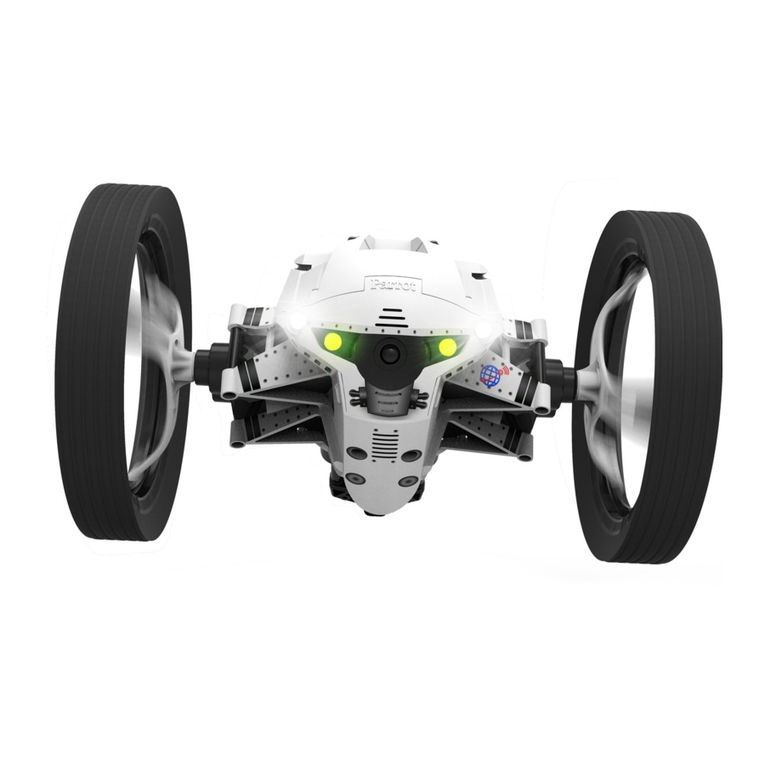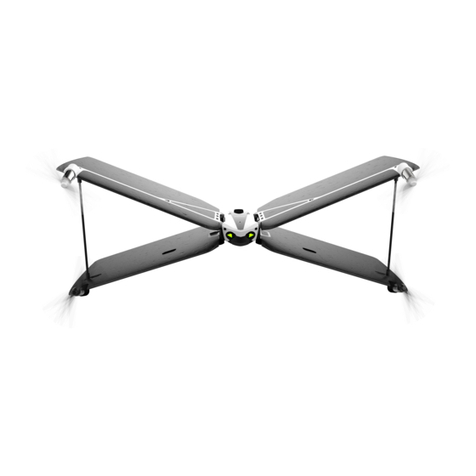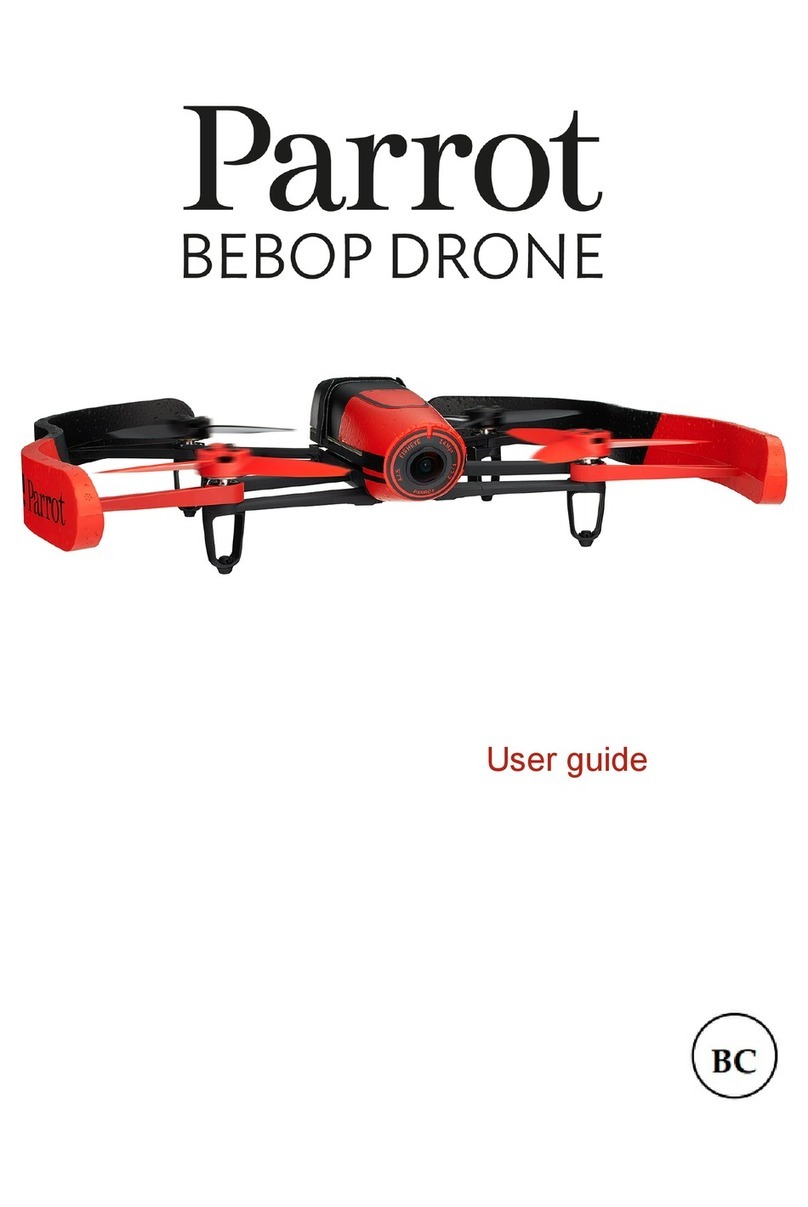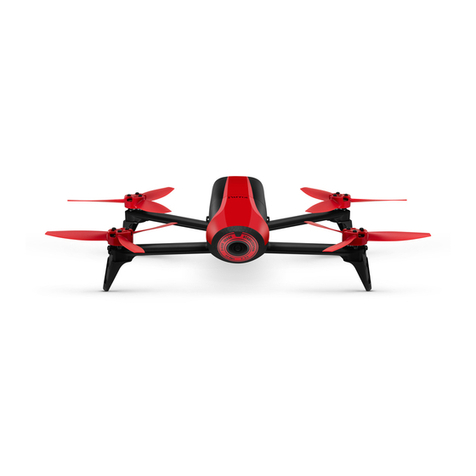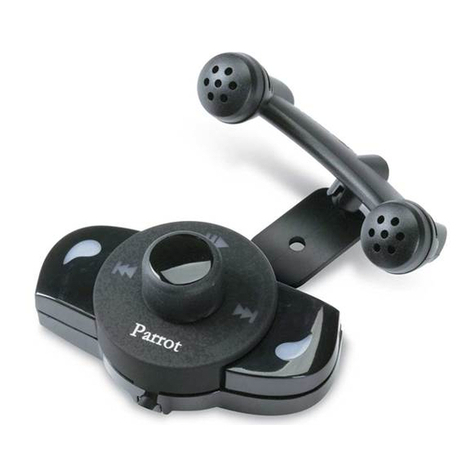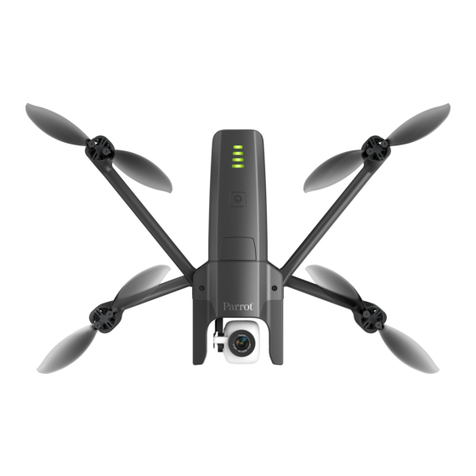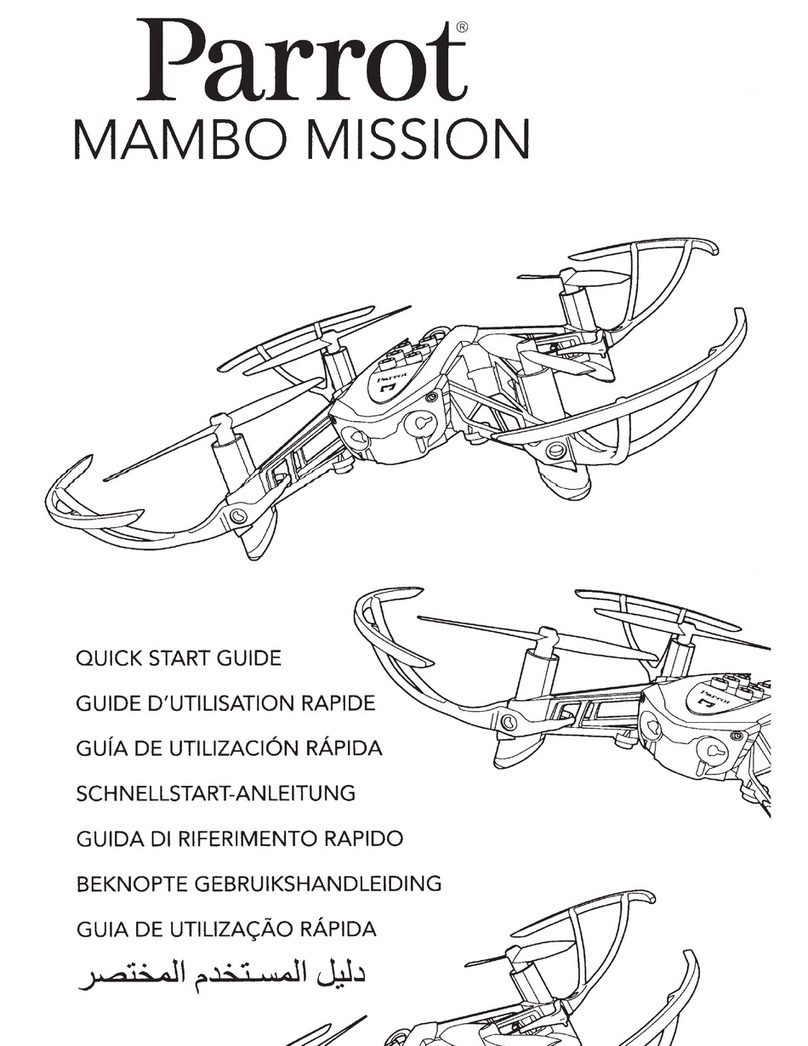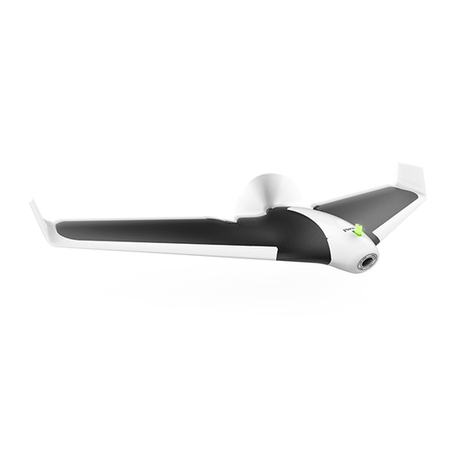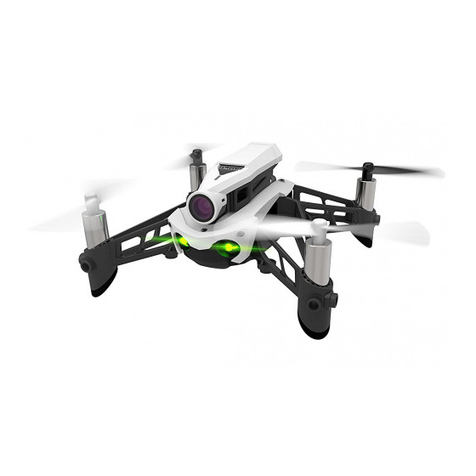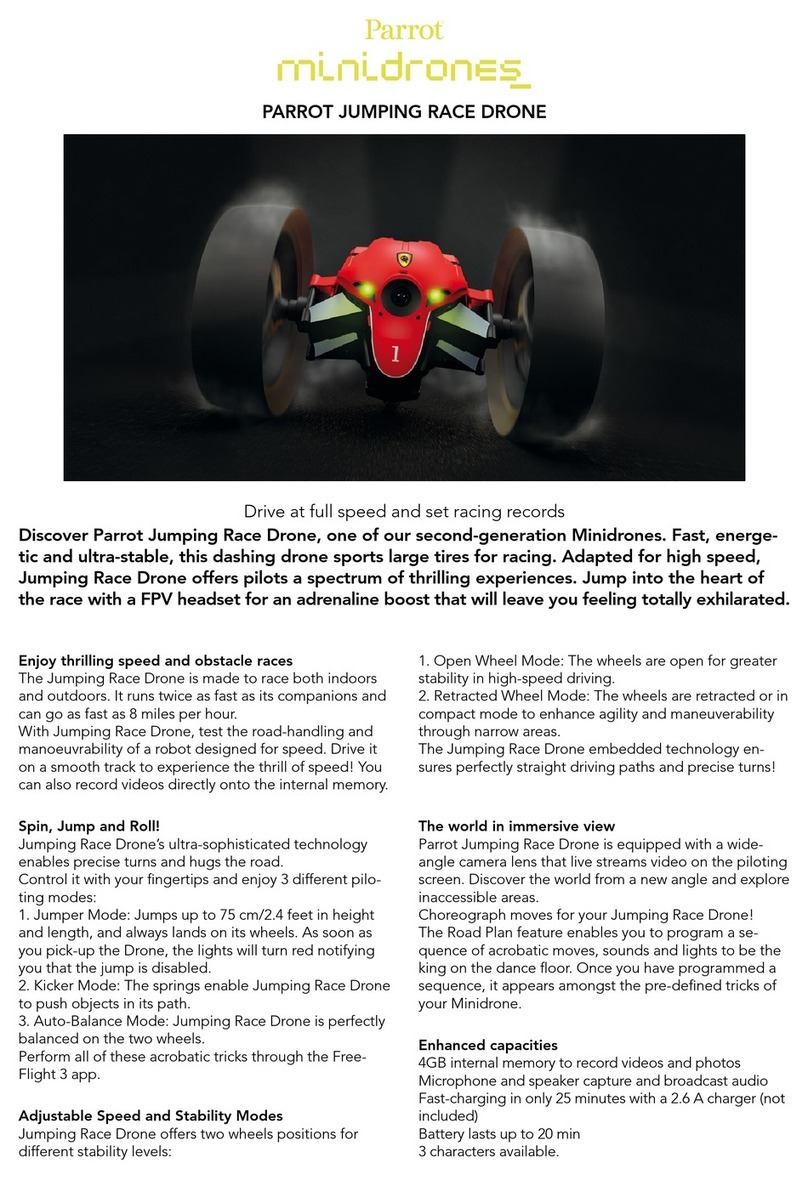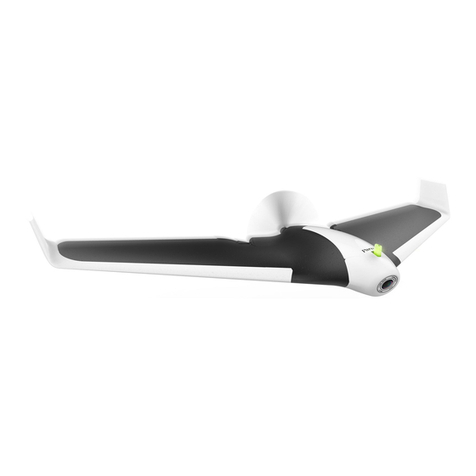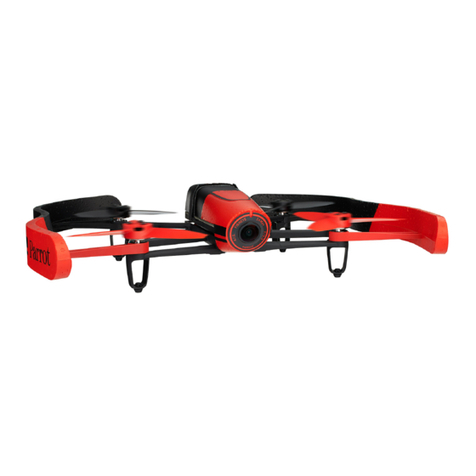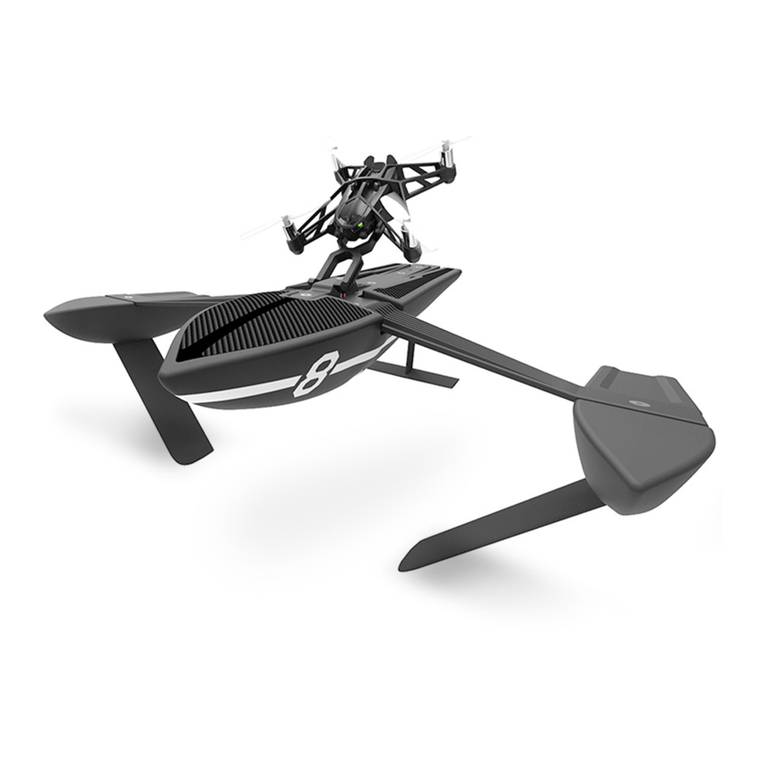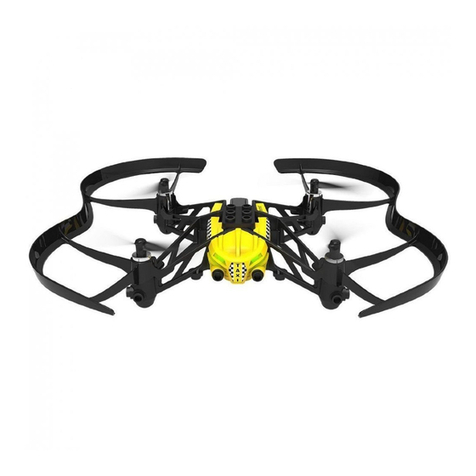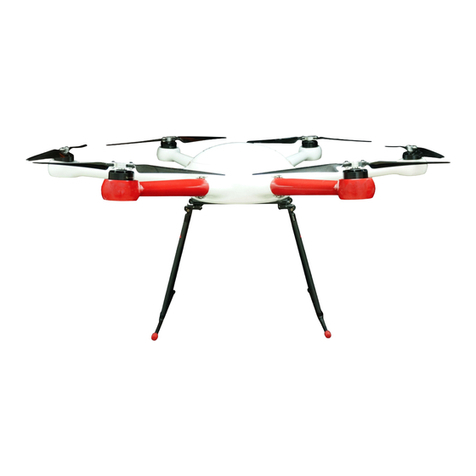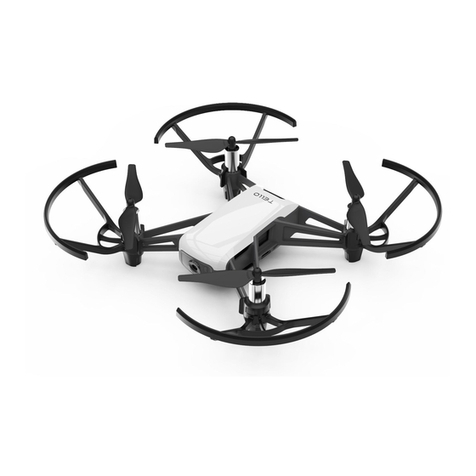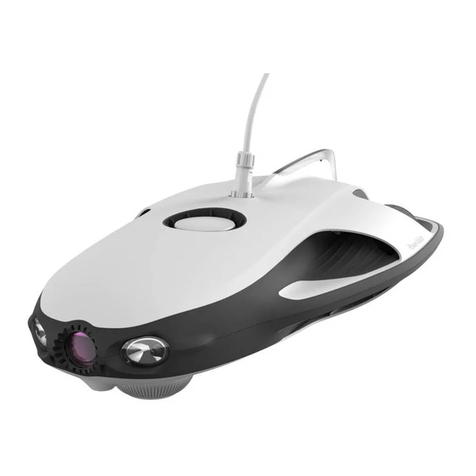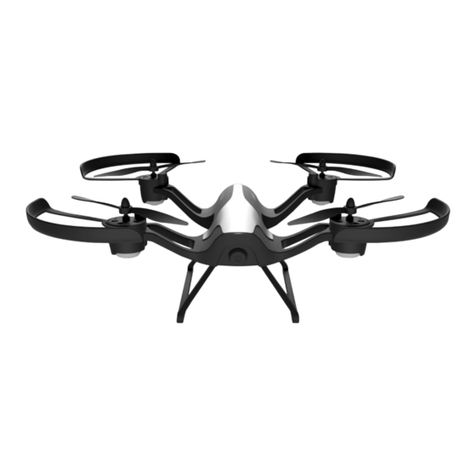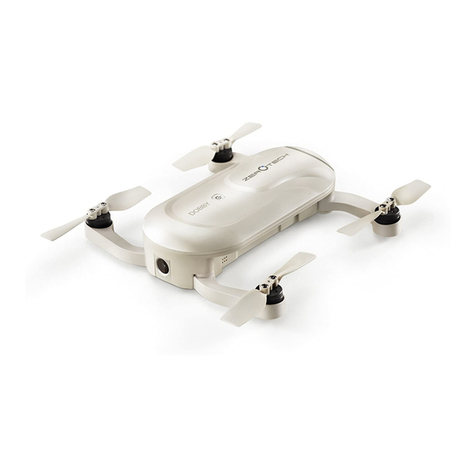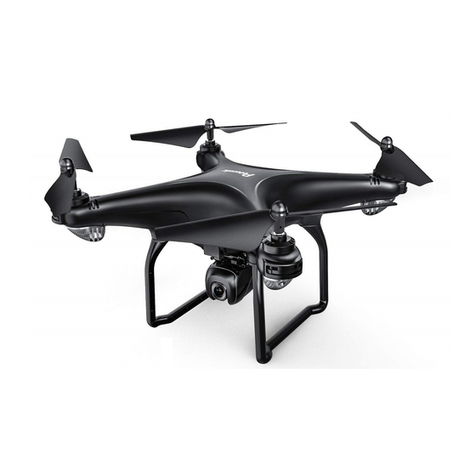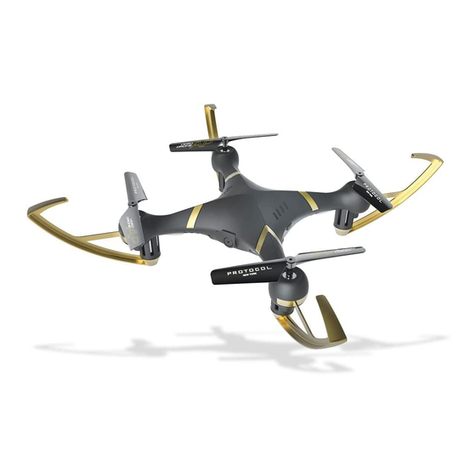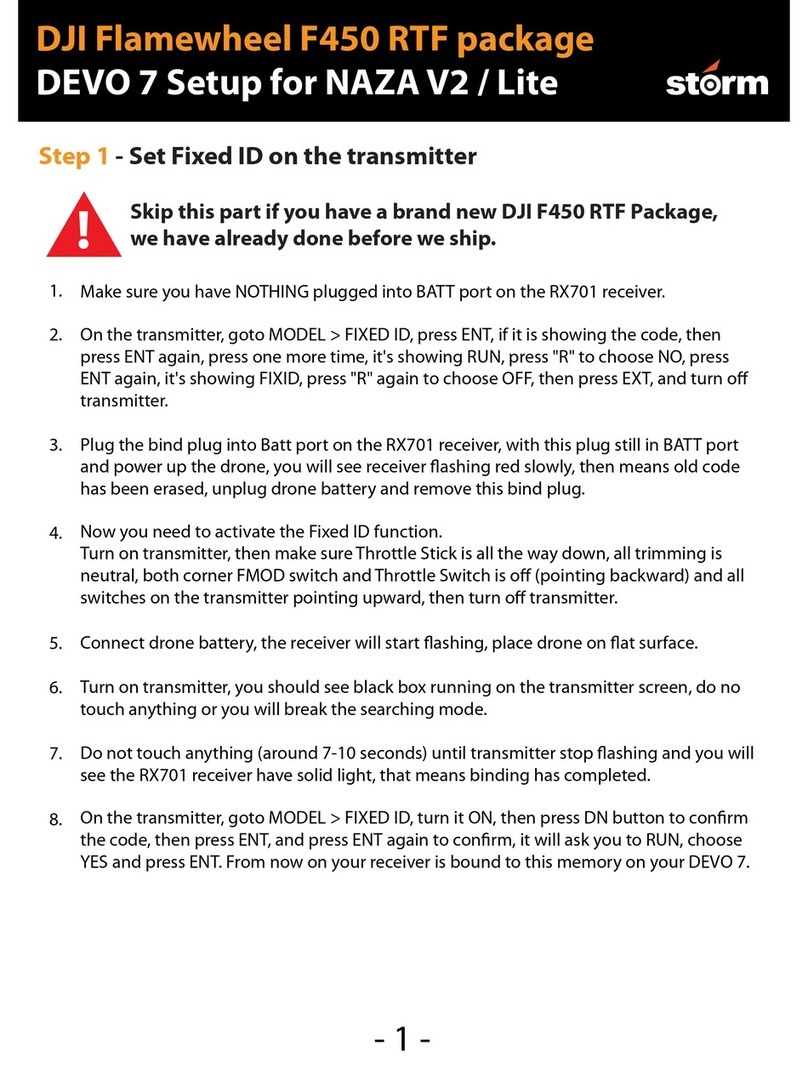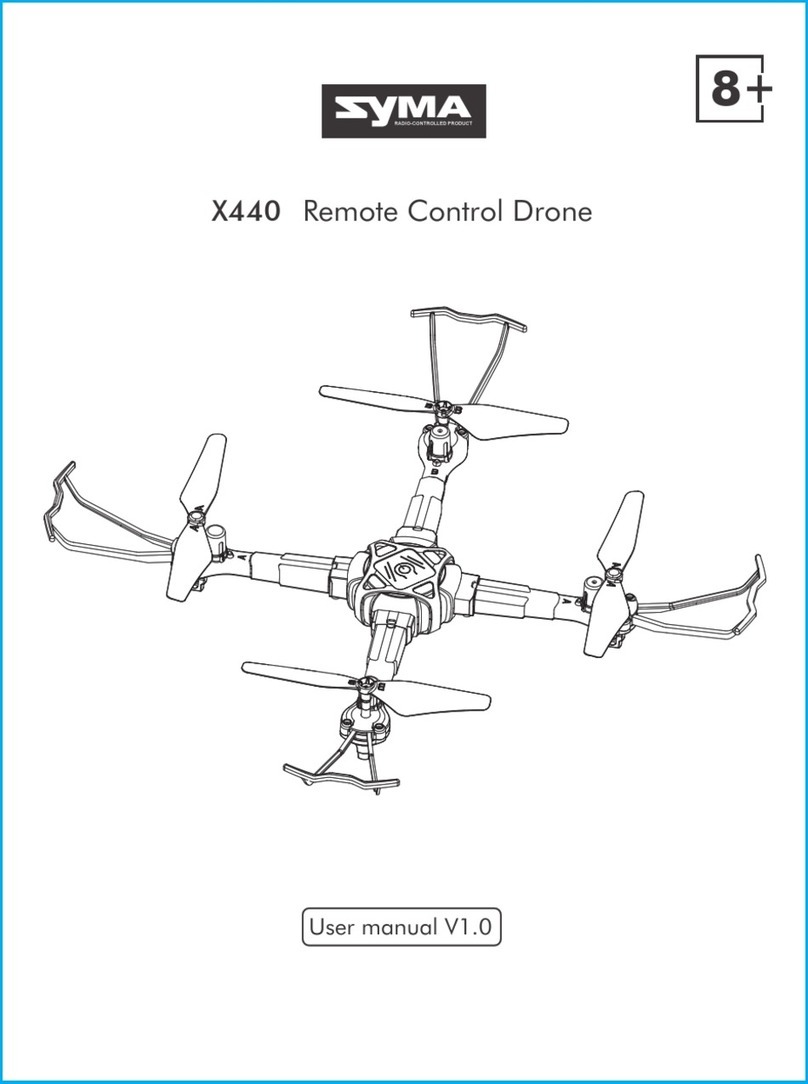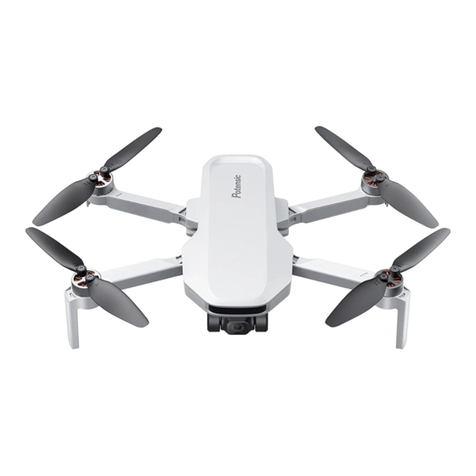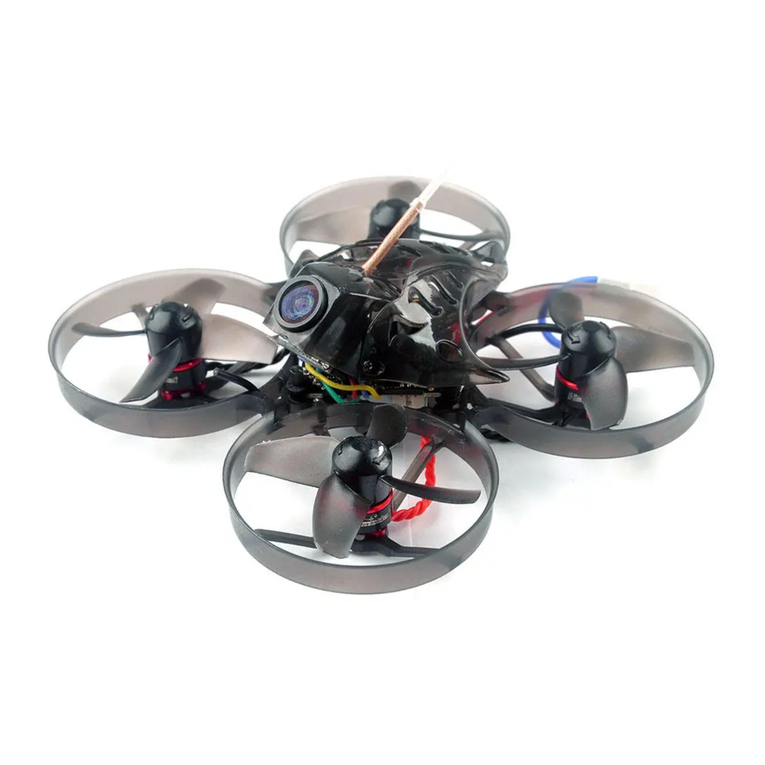
4
ENGLISH
USE OF A DRONE
It is your responsibility to ensure the safety of people and other aircraft.
1. DO NOT FLY OVER PEOPLE
When using the drone, make sure you do not endanger nearby people or
vehicles. Do not fly over them and maintain a minimum safety distance. Keep
well away from groups of people.
2. RESPECT THE MAXIMUM FLYING ALTITUDES
Always respect the maximum altitudes to limit the risk of a collision between
your drone and other aircraft. In all circumstances, give way to manned aircraft.
3. NEVER LET THE DRONE OUT OF SIGHT, AND DO NOT USE IT AT NIGHT
Keep the drone within your visual line of sight at all times. Immersive flights
(FPV) and the use of drones that automatically follow you are possible only
under certain conditions, notably in the presence of a second person to ensure
flight safety. Furthermore, in order to ensure the safety of aircraft flying at low
altitudes, such as helicopters performing rescue missions, regulations forbid the
use of drones at night, even if they are fitted with lights.
4. DO NOT USE THE DRONE ABOVE PUBLIC AREAS
Flying a small drone over private land in the absence of other people is possible
provided you respect the maximum altitude and speed appropriate to the
immediate surroundings (building, trees, etc.) and which would minimize risks.
In no circumstances can you fly the drone above public areas.
5. DO NOT FLY THE DRONE NEAR AIRFIELDS
Do not use the drone near any airfield where airplanes, helicopters, gliders,
microlights, etc. may operate. Minimum safety distances are to be respected,
which may reach 10 km in the case of busy airports.
6. DO NOT FLY OVER RESTRICTED SITES
It is forbidden to fly over some restricted or protected sites, as well as their
surrounding areas. These include for example nuclear power stations, military
bases and historical landmarks, as well as nature reserves and national parks.
Check if you are in such sites before beginning a flight.
7. RESPECT OTHER PEOPLE’S PRIVACY, DO NOT BROADCAST IMAGES TAKEN
WITHOUT THE PERMISSION OF THOSE CONCERNED, AND DO NOT USE THEM
FOR COMMERCIAL PURPOSES
People around the drone must be made aware of what you are doing, especially
if the drone is fitted with a camera. Inform those present, answer their
questions, and respect their right to privacy. Refrain from recording images that
would make it possible to recognize or identify people (faces, number plates,
etc.) without their permission.
8. ABOVE A CERTAIN WEIGHT, LEGAL OBLIGATIONS MAY APPLY. SEEK
INFORMATION FROM THE APPROPRIATE AUTHORITIES
For example, the following requirements may apply:
• Registering the drone through the appropriate authorities;
• Fitting devices to restrict flying altitude, devices to emit an electronic/digital
signal, or devices to make its presence known through lights/sounds;
• Completing an online training course.
9. CHECK THE CONDITIONS UNDER WHICH YOU ARE INSURED TO UNDERTAKE
THIS ACTIVITY

